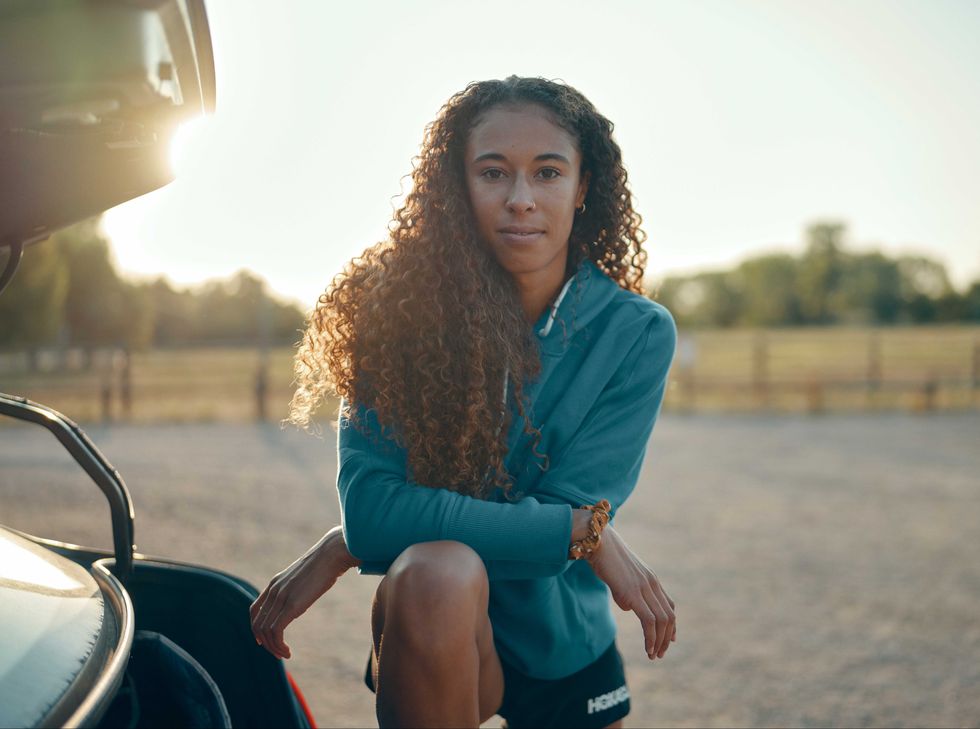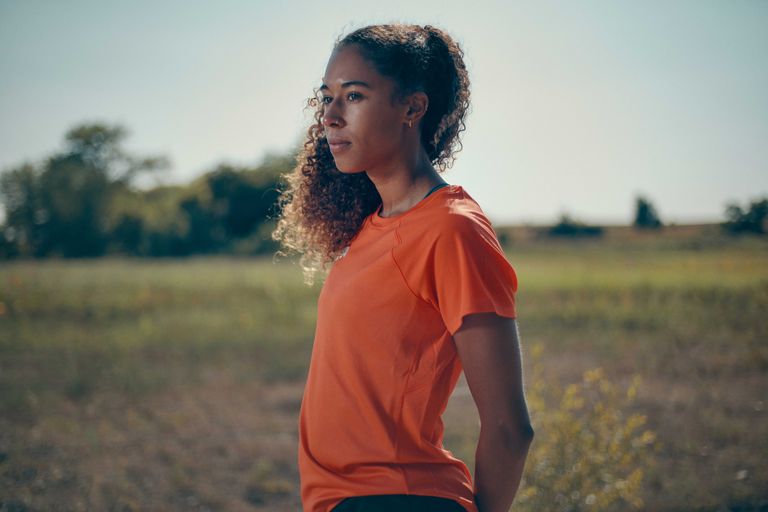
In February of 2020, I began writing an article about my experiences competing as a Black woman at the elite level of distance running for RUNGRL, a platform dedicated to creating space for Black female voices in the sport. Less than a week later, Ahmaud Arbery was murdered while out on a run. Suddenly, the article took on a whole new weight. I was no longer speaking only for myself, I was speaking for my community.
The past year has been a painful one. Choosing to speak directly to the running community about the realities of being a Black runner was a decision I did not take lightly. Sharing uncomfortable, demoralizing, and traumatic experiences for strangers to read and pick through is exhausting and not without consequences. However, I’ve discovered that the dialogue that stems from speaking openly has helped me learn how to navigate conversations about the issues of social justice sweeping our nation, race related or not.
Since then, I’ve hosted several webinars that focus on the experiences of minority athletes within Division 1 track and field teams. My goal is to give the athletes the tools to open and navigate the discussions they want to have. Learning how to better understand teammates with different opinions makes it more likely that individuals will act with empathy and respect when an issue of social justice arises. I designed a presentation that allows students to interact anonymously. Using a platform called Padlet, I’m able to pose a series of questions on a private discussion board. Everyone in the presentation can anonymously post answers to the questions they feel comfortable sharing, and everyone is able to view the responses to each question.
My hope is for the teams to reframe the way they identify with their self-selected communities. We have a tendency to define our social groups by the most outwardly apparent shared trait. But by speaking about our own relationships in terms of shared interests as opposed to shared backgrounds, it helps those outside our community avoid relying on stereotypes to understand what keeps people connected. And while our race, religion, and passions are all deeply important to who we are, they are no longer the sole way we define one another.
My goal with these team discussions is to help the group reach a place where they feel more comfortable initiating and navigating their own conversations without the assistance of a mediator. Here are the steps I take to facilitate that.
WHILE OUR RACE, RELIGION, AND PASSIONS ARE ALL DEEPLY IMPORTANT TO WHO WE ARE, THEY ARE NO LONGER THE SOLE WAY WE DEFINE ONE ANOTHER.

Discuss Comfort Levels
First, I ask the students about their comfort and experience with conversations about race and social justice. For some, these topics were constantly discussed in their homes while they were growing up. For others, this may be the first time they’re having these conversations. But for most people, topics surrounding social justice and the mistreatment of others have been touched upon, but without much substance. The extent of these conversations is often the sentiment of “treat others how you wish to be treated.”
I like to start the presentations by establishing how experienced each group is with these topics, not only for myself but also for the students participating. Like anything else, learning how to foster constructive conversations about social justice takes practice. For example, this moment may be the first time some students have had an open discussion about race. It’s also important to understand that a question or assumption that may come off as ignorant or uncaring is often coming from a place of genuine curiosity and misunderstanding. Acknowledging that this may be new territory for the questioner makes it much easier for teammates to provide constructive feedback on why a question or comment may be offensive or problematic.
Talk About Differences
Next, we look at people’s awareness of the physical differences in those around them. Do the athletes notice things like skin tone, physical build, and gender? Across the board, the answer is always yes; everyone notices physical differences. Every athlete I’ve worked with has indicated that they noticed the race and ethnicity of their competitors. This step is especially important, because after recognizing that all members of the group see these physical differences, students tend to become more comfortable sharing their own personal experiences.
In one conversation, a student described the pressure she often feels competing as an athlete of Southeast Asian descent. She explained that she was unsure why she felt this pressure, but as one of the few Asian track athletes in the NCAA, she feels that any track race, good or bad, will impact the perception of how successful an Asian athlete can be.
Another student talked about being frequently mistaken as a member of the soccer team, and how that has led to her spending time thinking about her body type, something she rarely did before college. After explaining to strangers that she’s actually a track and field athlete, she said, they often reacted with shock to find that distance running was her event. She described her frustration with these types of assumptions: Although many body types are represented in distance running, strangers still believe they can determine everything about her athletic ability simply by looking at her. Several other athletes shared similar experiences, which led to further discussion. Athletes who also felt that they didn’t fit the typical profile of an athlete in their sport wished it were more acceptable to correct those preconceived notions.
Although most people are aware of physical differences, many of us are taught to act as if we don’t notice them. I believe that this way of thinking comes from wanting to treat each other equally, but I also believe it makes it harder to ask questions, start conversations, and learn for ourselves. By never having conversations before we make assumptions, we’re more likely to form associations with these physical traits based on widely perpetuated stereotypes.
Be Honest About Struggles
Finally, I ask the athletes to share what makes social justice conversations difficult for them. As they begin to reveal their struggles with these conversations, something interesting tends to happen. Their teammates, many of whom were silent for most of the discussion, start to speak up and provide suggestions based on their own experiences. Questions about topics from race to religion to politics begin to be presented, and thoughtful answers and opinions are always handed back. Up until this point in the conversation, I’m generally an active participant and moderating the discussion. But at this stage, I’ve found that students are more eager to take over and start teaching and learning from their teammates.